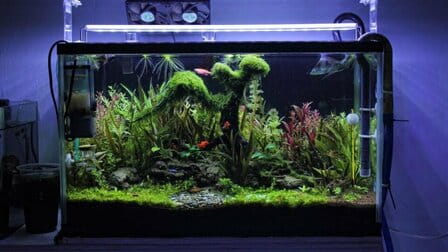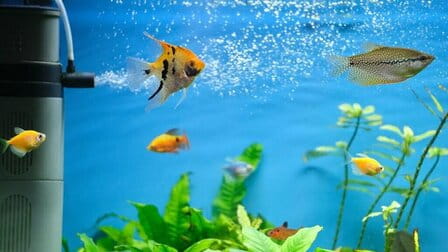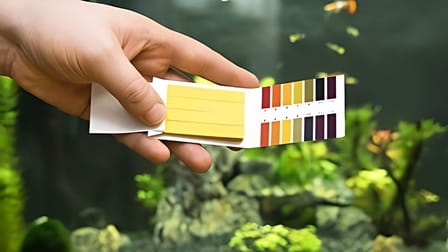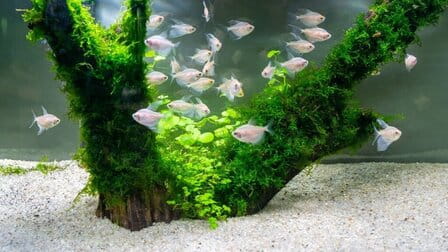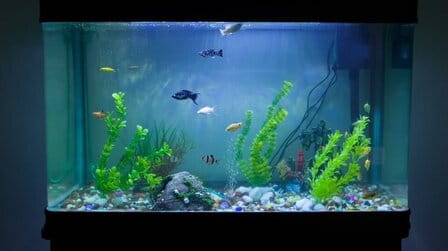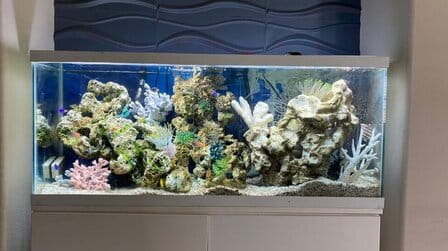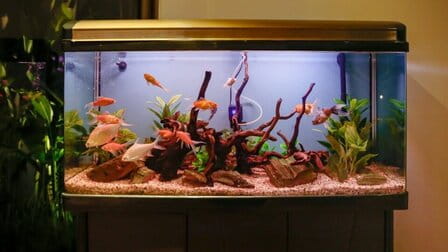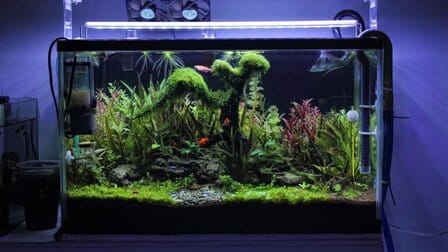It is known that the filter acts as the main engine of the tank by keeping the water flowing smoothly so that the water does not stagnate. Stagnant water creates dead space for ammonia to build up which can be harmful to plants, fish, and shrimp. When there is no water flow, it limits the amount of oxygen that flows through the tank. Invest in a small tank that doesn't have an air filter or rock, which requires frequent water changes, and make sure to limit the number of animals you have in the tank. Function of aquarium filter
Choosing the right filtration system will determine how much time it takes to clean the tank. And it makes a big difference in the type of filtration system used. Most filters today work mechanically, keeping solid wastes in the filter media which can later be removed manually.
A biological filter is to build beneficial bacteria in the filter media to break down ammonia and nitrite which is the toxic "nitrogen cycle". This process is called the aquarium nitrogen cycle; If you want to learn about what the aquarium nitrogen cycle is, read my article on How to choose an aquarium filter will help clean and help keep the water column crystal clear.
1. Filter type

1.1. Sponge filter
This type consists of sponge-like material placed in the tank. The air pump is located outside the tank. The suction of the filter, provided by the air pump, pulls debris or debris that exists in the aquarium through the sponge.
Often they are known for the simplest uses on the market. However, some people will stay away from sponge filters because there is a sponge in the tank, which spoils the aesthetics of the aquarium.
They are good for smaller aquariums and aquariums. It will create minimal water agitation causing little disturbance to the fish. With larger tanks, a sponge filter may not provide enough water movement to circulate the entire tank.
1.2. Hang-on-Back Filters
This is a hanging filter or HOB filter, which is the most common type of filter used by hobbyists. According to the filter's name, the HOB filter will hang on the edge of the tank (usually the back). This simple external filter pulls water from the tank through a pump, passes it through different sections of the filter media, and then is returned to the tank through a hose.
HOB filters are easy to clean and use for all tank sizes. This is a great filter for beginners, but popular with experienced aquarists because of its low maintenance.
1.3. Canister filter
Telescopic filters are the most powerful but discrete type of filter. Also powered by a pump, this unit is often hidden underneath the tank inside the aquarium stand. The only parts that will be seen are the return and outlet pipes, which can be swapped out from plastic to glass or steel tubing for a more discrete look.
Telescopic filters are good for larger tanks (over 30 gallons) with lots of livestock that need extra energy to maintain a healthy balance. In the market, they are more expensive and are considered higher maintenance than HOB filters and sponge filters.
2. Types of filtration
2.1. Mechanical filtration

Use to remove solid waste such as debris such as fish droppings, fish food, or rotting plant material. It works by catching waste as water flows through. Mechanical filtration helps to clean the tank and aerate the water.
2.2. Biofilter filtration
Helps remove biological waste such as excess ammonia. The nitrifying bacteria established in the filter convert the ammonia into the less harmful nitrate, nitrite. Biological filtration is very important for maintaining a balanced tank. Without it, the ammonia in the aquarium will rise to dangerous levels that are harmful to fish, shrimp, and plants.
2.3. Chemical filtration
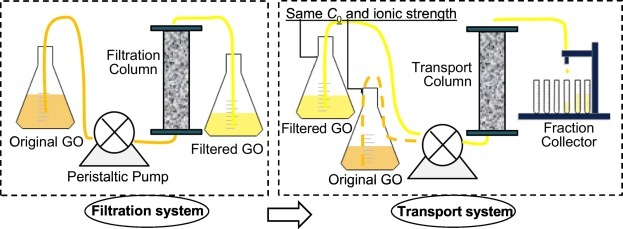
In the process of removing dissolved wastes such as decomposing organic matter or chemicals present in the water. The carbon will capture dissolved wastes or chemicals and prevent discoloration and odors in the tank water.
3. Filter components
Often filters are not only available in a multitude of different brands, shapes, and sizes, but the components inside the filter can also be varied.
3.1. Filter Floss
This is a filter material usually made up of polyester fibers densely packed into a sheet. As water flows through the compression plate, it purifies the water by catching small particles before returning to the storage tank. This filter media acts as a mechanical filter in the tank.
3.2. Filter Sponge
This is a filter material made up of a coarse pad that will be placed in front of the filter cotton. The sponge will help catch larger particles that help prevent clogging. Like filter cotton, this filter media acts as a mechanical filter in the tank.
3.3. Gaskets / Bio Balls
It is a porous filter material with a large surface area for beneficial bacteria to thrive. Not only does it provide a good environment for beneficial bacteria to grow, but it also maintains a balanced nitrogen cycle.
4. Activated carbon

Activated carbon (type option) can be placed in the filter to remove chemicals and other contaminants from the tank's water column. The pores on activated charcoal will become clogged due to the chemicals it removes, so it must be changed regularly (about once a month is recommended).
Even fertilizers and drugs will be filtered out by activated carbon. Remove activated charcoal before taking the medication. Activated carbon is considered the chemical filter of the tank. When sold in the market it will be packaged in a padded cartridge such as the Delta 60 Activated Carbon Cartridge.
5. Tank size
Measure a variety of tank shapes and sizes for customization, but most aquariums are built to certain standard sizes. Knowing size, shape, and weight is important when choosing tanks and racks, as well as where to place them.
6. Heater size

Many manufacturers will provide heater sizing guides that make it easy to choose the right size heater for your aquarium and typical room temperature. Aquariums must have a capacity of 5 Watt per gallon of water, so a 10-gallon aquarium requires a 50 Watt heater.
The fireplace will always fail at night when winter is deadly. The backup heater doesn't have to be the most expensive, it just keeps the water warm until it can be replaced.
In tanks 50 gallons or more, consider two smaller heaters instead of one large one. Heat will be distributed more evenly, so one can be placed at each end of the tank. If it fails, at least one heater will be available to keep the water warm until it can be replaced.
7. Filter size

Not sure what size to choose for the filter. So the general rule is that all the water in the tank should pass through the filter at least four times per hour. That makes it easy to calculate what it takes. When it's borderline, always switch to a higher flow rate. As a thirty-gallon tank runs a flow rate of at least 120 gallons per hour (mph). If your filter selection is 100 or 150 gph, you should buy a 150 gph filter.
8. Time to run an aquarium filter

The aquarium filter should run 24 hours a day, including at night. The filtration system in the aquarium is responsible for keeping the water clear, creating the necessary water flow, helping to provide oxygen throughout the tank. You know, Oxygen is very important for the fish and beneficial bacteria in the tank. If the filter is turned off, and the aerated water is no longer being delivered to the filter and the gravel layer of the aquarium, beneficial bacteria will begin to suffer. If turned off for just a few hours, beneficial bacteria can start to die. Without beneficial bacteria, the ammonia levels in your aquarium can spike, eventually harming the fish.
Conclusion
When choosing an aquarium filter, the first and most important factor to consider is the size of the tank and the needs of the fish? If you are looking for a good aquarium filter then don't miss our related articles.

